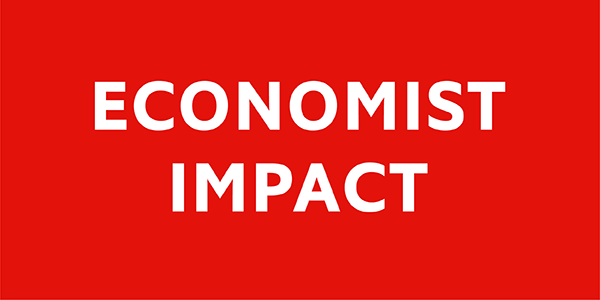Advertisement feature Custom content is written, produced or curated by either a sponsor or by EI Studios, the custom division of Economist Impact. Such placements are clearly labelled as Advertisement, Advertisement feature, Sponsored content, Sponsor perspective, or words to that effect wherever they appear on our website or apps. Neither The Economist news and editorial team, nor Economist Impact’s independent experts, have any involvement in the creation of this content.
Amber Group’s flagship digital asset platform aims to empower mainstream investors
To serve the needs of both its institutional and retail customer base, Amber Group rolled out WhaleFin, its flagship digital asset platform driven by security and sustainability.
Digital asset company Amber Group is on a mission to democratise access to the world of cryptocurrency, via its flagship digital asset platform WhaleFin. And it seems to be working.
The global FinTech unicorn, backed by some of the biggest global investors, including Temasek, Sequoia, DragonFly Capital, and Coinbase Ventures, has surpassed US$3 billion in valuation, generating more than US$500 million worth of digital wealth for its more than one million retail customers and over 1,000 institutional clients.


According to Yi Bao, partner and head of product at Amber Group, WhaleFin is “well positioned” to “mainstream” crypto finance and empower people to build their digital wealth through its easy-to-use crypto finance products and services. “The launch of the WhaleFin platform is a very important milestone for Amber Group as we deliver on our mission to unlock the value of crypto finance for both individuals and institutions,” he says.
“We are serving both retail and institutional markets with WhaleFin, an all-in-one platform that bridges the demand and requirements of both markets,” he says.
By combining the institutional-grade features of its Amber Pro platform, launched in 2019, with the intuitive user interface and components of the Amber App, launched a year after, WhaleFin serves the dual needs of its institutional and retail customer base.


Bao says WhaleFin launched at a very “sacred” time — in December 2021 — which saw the growing momentum of digital assets as more traditional finance institutions were starting to enter the field.
In order to serve the needs of both, the platform comes in two versions. First, the ‘Pro’ version, aimed at crypto-natives and advanced investors, provides comprehensive access to its full suite of trading features including its algorithmic execution services, margin trading, spot trading, and dual currency products.
The other, WhaleFin Lite, is targeted at retail investors and the crypto curious. It offers a more simplified user experience designed to educate beginners and serve as a gateway for the crypto curious to enter the world of crypto finance. Users can easily buy, earn, swap, and spend digital assets at their fingertips.
Recently, Amber Group rolled out non-fungible token (NFT) products on the WhaleFin platform, allowing users to deposit, withdraw, and display their NFT features. Having recently partnered with Mastercard, it also plans to roll-out spending features via a crypto-backed credit card which allows users to easily spend their cryptocurrency.

Bao says that the WhaleFin app provides long-term value generation for its users, empowering them to build sustainable, digital wealth. “Our target users do not want to gamble on high-margin, high-risk trades; their focus is on long-term value generation,” he says. “WhaleFin’s product offerings allow our users to maximise their yields to build out their digital wealth. Our all-in-one platform allows users to earn, trade, and spend cryptocurrency securely and easily.”
“Our underlying cutting-edge technology and sophisticated algorithms support customised execution and automated trading services such as Iceberg, TWAP, and VWAP with almost no price impact,” he adds.
A focus on sustainability
The platform will soon be rolling out carbon credit related features which will allow users to buy carbon credit tokens that they can choose to “burn”. This means that users can actively invest in a sustainable future, with the option of having tokens donated to sustainability projects which are helping to protect the environment.

WhaleFin recently partnered with a leading not-for-profit organisation, Whale and Dolphin Conservation, or WDC, and “adopted” a 46-year-old humpback whale called Salty. Dubbed “the most famous humpback whale in the world”, Salty has birthed at least 14 calves in her lifetime. Calves have then gone on to spawn several more generations of humpbacks, making her a mother, grandmother, and great-grandmother.
“As soon as users ‘burn’ their carbon tokens, we deploy these funds into projects such as the Amazon Rainforest protection for example, to help mitigate the carbon emission problem,” explains Bao. He adds that, in order to offset the carbon generated by cryptomining, “we are also buying the carbon credits to offset the footprint we have already made in this industry”.
“Sustainability is just not just a word,” says Bao. “We need to demonstrate our commitment to protecting the environment at every step along the way.”
Secure trading
For WhaleFin, security is as core a principle as sustainability. It thus leverages multi-party computation technology to ensure security for its users, establishing a robust trading infrastructure. It has partnered with a leading security infrastructure provider in the industry, Fireblocks, to allow investors to invest and grow their digital assets with total peace of mind.


“The security of our clients’ assets is our number one priority,” Bao says. “We have invested years of effort and dedicated our resources to deliver cybersecurity, cryptosecurity, and operational security.” He explains the use of secure transfer environments, called ‘The Walled Garden of Wireless’, to address this.
WhaleFin also uses multi-factor authentication, which reports when users log into their accounts or make withdrawals.
Better, digital future
Taken as a whole, Bao says that the Amber Group mission is to ultimately help create a digital future where digital assets empower people with the opportunity and agency to shape a better world for all.


“Besides passwords and SMS verification, we also require
users to to use Google Authenticator or an equivalent
multi-factor authentication app to help keep their phones
safe as well,” Bao says. “By authenticating deposit
addresses to all network accounts, we protect the deposit
address from man-in-the-middle attacks and spoofing entry
attempts. Our zero-trust environment is designed to
eliminate any potential risks.”
Further, the API keys for moving funds between exchanges
and wallets are stored in a trusted execution environment
which cannot be retrieved by hacker “insiders”, or even
its MPC wallets. “All these security solutions have passed
Deloitte’s audit SOC 2 certification,” Bao says.


“Our mission is not just trading,” he says. “We’re here to support users as they focus on generating long-term value, and for them to be more conscious and thoughtful with their investments and their impact on the wider communities and the planet we live in. As we move forward, our team plans to integrate innovative elements related to sustainability and digital lifestyle at a product level.”
“Our mission is to enable users to build a sustainable digital world, and in time, create sustainable digital wealth for the benefit of everyone.”

 1
1
 2
2
 3
3
 4
4
 5
5
 6
6
 7
7
 8
8
 9
9
 10
10
 11
11
 12
12
 13
13
 14
14
 15
15
 16
16
 17
17
 18
18
 19
19
 20
20
 21
21

Content from Economist Impact
Whitepaper | Open access: the future of data portability
The importance of data portability for consumers, businesses and societies is growing globally. This report explores the legislative landscape for data portability at present, and examines consumer perceptions regarding data portability and potential data portability models.
Video | Open access: the future of data portability
This video explores the key findings from the programme covering the legislative landscape for data portability at present, and consumer perceptions regarding data portability.
Back to top













